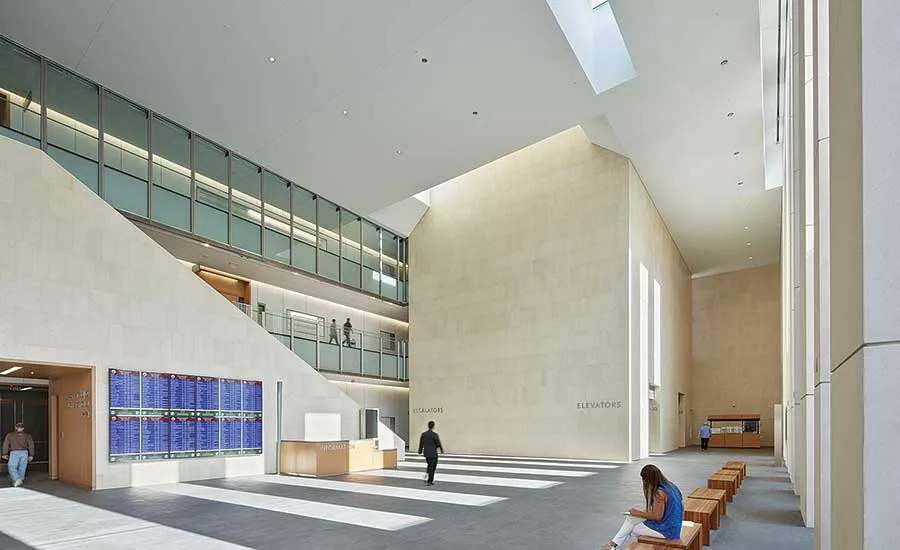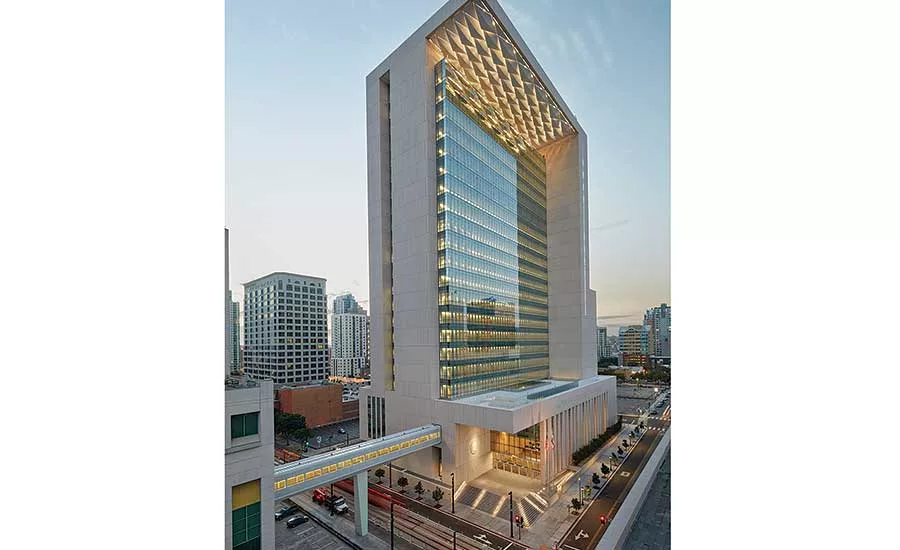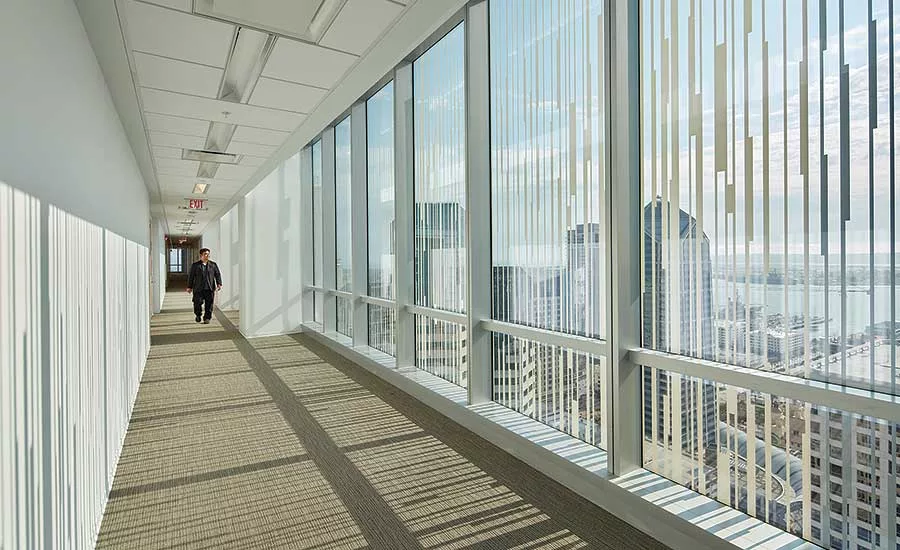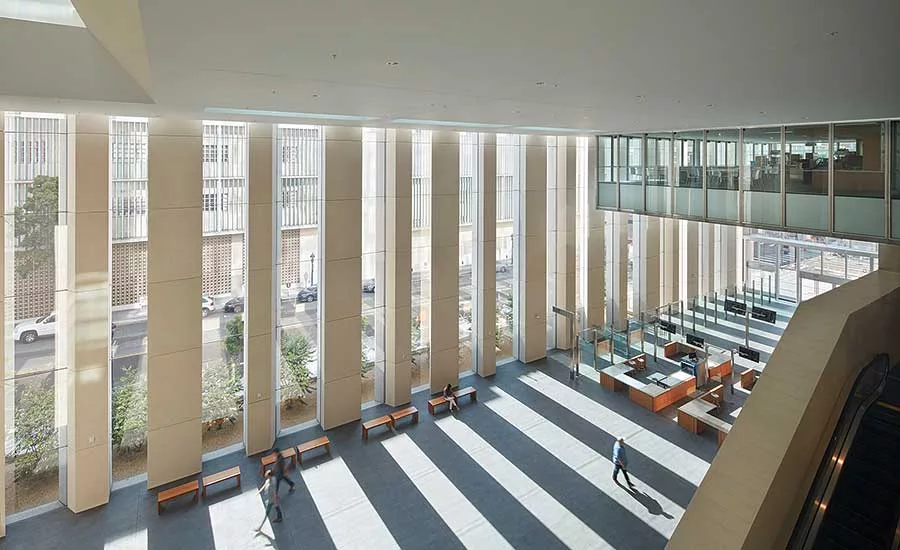Radiant heating and cooling ushers in new era in San Diego courthouse
The 370-foot tall structure replaces a three-block-long, seven-story county courthouse that opened in 1961.

Photos courtesy of REHAU

Photos courtesy of REHAU

Approximately 112,000 feet of 5/8-inch RAUPEX pipe runs through the courthouse carrying temperaturecontrolled fluid. For the floors that have an identical footprint, the pipe was preassembled on customized RAUMAT, which was delivered in rolls, providing significant time and cost savings. Photos courtesy of REHAU

Approximately 112,000 feet of 5/8-inch RAUPEX pipe runs through the courthouse carrying temperaturecontrolled fluid. For the floors that have an identical footprint, the pipe was preassembled on customized RAUMAT, which was delivered in rolls, providing significant time and cost savings. Photos courtesy of REHAU
They say good things come to those who wait. Judges, prosecutors, law enforcement officials and others who spend their days in and out of courtrooms in San Diego waited more than a decade for a proposed new state courthouse to become reality. Most will agree the 25-story tower at the intersection of Union and C streets, which officially opened in December 2017, was worthy of their patience.
The 370-foot tall structure replaces a three-block-long, seven-story county courthouse that opened in 1961. Local and state officials initially proposed the project in 2004, but plans were put on hold until 2010. The new courthouse consolidates San Diego County’s criminal trial, family and civil courts into a facility that is loaded with high-tech features, including a radiant heating and cooling system that runs throughout the public corridors on each floor and the expansive, multi-use public space on the building’s first three floors.
“The intent was to make this the most sustainable project possible,” said Steve Sobel, FAIA, managing director of Skidmore, Owings & Merrill LLP (SOM), the architectural firm that designed the courthouse. The courthouse earned a LEED Silver certification.
The 704,000 square foot courthouse is expected to be used by more than 1.2 million people per year (approximately 4,000 per day). Sobel says the building’s transitional spaces — its airy multipurpose spaces on the first few floors, the hallways and elevator areas — are ideal for the energy-efficient REHAU radiant heating and cooling system. The building’s courtrooms, offices and other private areas, which are more enclosed and handle widely varying occupant loads, are heated and cooled with a traditional HVAC system.
SOM has used radiant heating in similar public spaces in lobbies, office buildings and other large spaces. The San Diego courthouse is one of the largest SOM projects in which radiant has been used. Approximately 112,000 feet (34,138 meters) of 5/8-inch RAUPEX pipe runs through the courthouse carrying temperature-controlled fluid. For the floors that have an identical footprint, the pipe was preassembled on customized RAUMAT, which was delivered in rolls, providing significant time and cost savings. Building chilled and hot water are mixed to appropriate temperature, depending on the operation (cooling or heating) of the radiant floors and zones.
“We looked at traditional HVAC systems for these spaces, chilled ceiling elements and chilled beams,” Sobel said. “In the end, [radiant] was the right system to use in these high-traffic areas.
The radiant system reduced the amount of duct space needed in the public areas (air ventilation is still preserved) and minimized concerns about coordinating between ducts with electrical and other infrastructure.
“We’ve done a lot of buildings with radiant floors,” said Ben Weerts, the lead mechanical engineer for the courthouse project. “In these types of climates, they are really great systems. Radiant makes the space really comfortable, especially when you’re dealing with large volumes of space. You don’t have to heat and cool the whole volume. You can just heat and cool the bottom strata where occupants are and it creates a comfortable environment.”
Looking for a reprint of this article?
From high-res PDFs to custom plaques, order your copy today!









